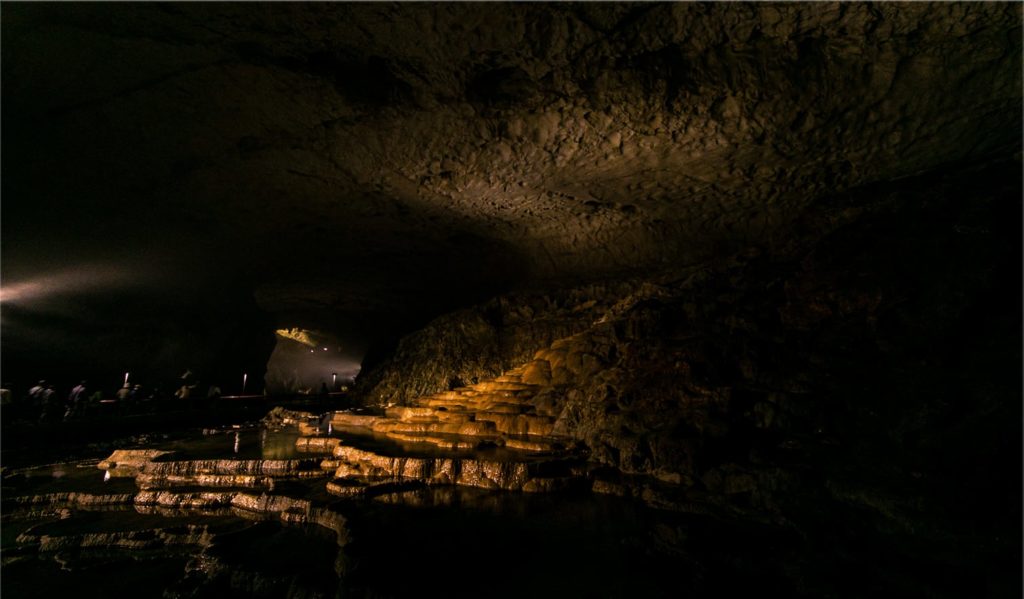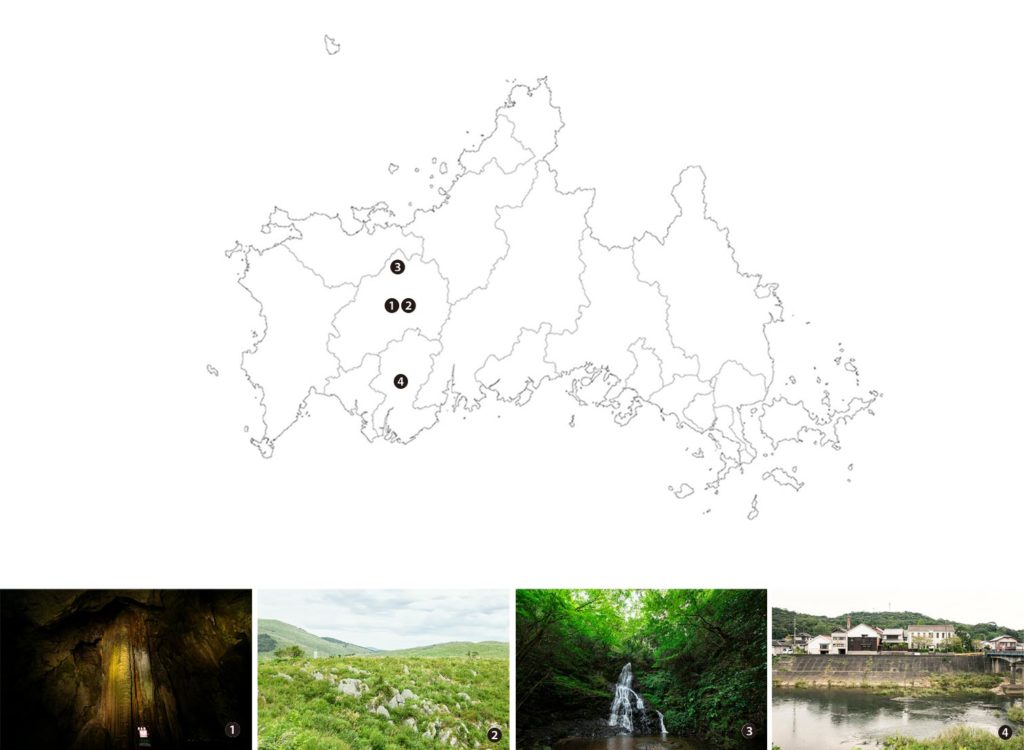Taka and Water
A Noble Arrow Let Fly by Limestone

Akiyoshidai Plateau and
110 mg/liter moderately-hard water.
The water for Taka is born as rainfall on the Chugoku mountains, a relatively low range for the island of Honshu. This water runs through the limestone karst plateau of Akiyoshidai in the center of the prefecture (picture 2 below), where it picks up minerals, and flows slowly down the Koto river to the Seto Inland Sea. Nagayama is in Futamatase, right where the Koto river transforms from a mountain stream into a primary river, and we draw our water from a spring that bubbles up from an aquifer 150 meters below it.
The water is moderately hard, at 110 mg/l mineral content. The sake born from this mineral rich water has a distinct acidity and a clear, sharp dryness allowing for the natural umami of the rice to come through. This crystalline minerality is the source of the brand name Noble Arrow used in America. Many sakes driven by minerality, but I feel that Taka is best summed up by the phrase: A Noble Arrow Let Fly by Limestone.

Kimoto Starter: From Trendy
to Traditional
Most of the water east of us in Yamaguchi prefecture is softer than what we use, and it gives rise to many well-known sakes. However, if you keep going another 300 kilometers east, you will reach Nada, the historical center of sake brewing in Japan. The water of Nada, which flows down from Mt. Rokko in the north, is quite hard at 160 mg/l. The area is also known for the robust sake-making traditions that developed to wrestle with that powerful water. Since I started brewing Taka and focusing on the junmai market, I have little by little grown closer to the traditional Nada style of sake brewing. A portion of the sake we shipped in 2019 was made using the labor-intensive kimoto starter process, a Nada tradition, to help express the character of our water.
Wine earned its place as a world drink in an age when shipping temperature control was not even a dream, when it was carried in hot, rolling ships across wide seas. It surely survived because the vintners focused on the inherent strengths of the grapes they used, and on concentrating that strength in their wine. With the establishment of our agricultural company last year, we are intent on growing rice full of vitality. We are also intent on research brewing techniques to bring out that vitality. That is the philosophy that drives our attitude to the water we have been given.

Taka’s Brewing Water
The Sources of the Koto River
1 (Picture at left): Akiyoshido Cave is found in eastern Mine city, Yamaguchi, and is a limestone cavern 100-200 meters below Akioshidai plateau. About 1 kilometer of it is open for public touring. It is the longest such cave in Japan, and an underground river flows from the Kotogafuchi section, about one kilometer in, to the cave mouth. It is a Special National Natural Monument, and part of Akiyoshidai Quasi-national Park.
2 (Second picture from the left): Akiyoshidai Plateau is a large karst plateau that sprawls across central and eastern Mine, Yamaguchi. It spreads 16 kilometers to the northeast and six to the northwest, for a total surface area of around 52 square kilometers. It is divided in half, with an east plateau and west plateau, by the Koto river, which is the source of Taka brewing water. It is the eastern section that is the “true” Akiyoshidai (Special National Natural Monument, Akiyoshidai Quasi-national Park).
3 (Third picture from the left): Shūhō Shiroito waterfall in Shūhōcho Kama Yashiro, Mine City is located upstream on the Koto river, near its source at Mt. Katsuragi. It is a popular sightseeing spot in summer, when people come to enjoy the white-threadlike streams and cool mountain air.
4 (Picture at right): Nagayama Honke Shuzōjō was founded in 1888 in Futamatase, located along the middle section of the Koto river. The current well was completed in 2007, and uses water from an aquifer below the Koto river.




